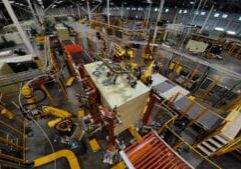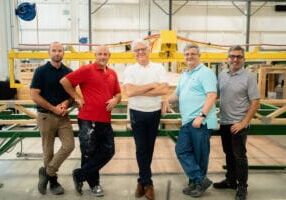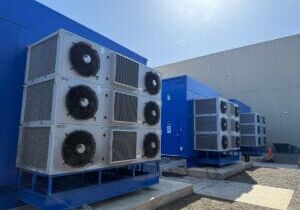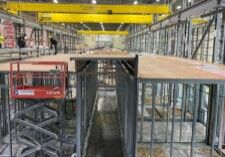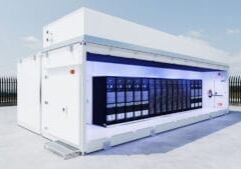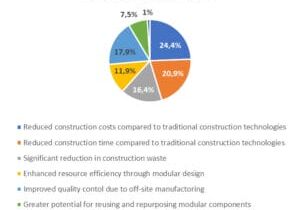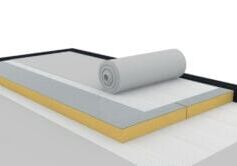A Blanket Approach
Why Polyisocyanurate Could be a Game-Changer for Offsite Construction

Steve Dubin is the Business Development Manager for Rmax, a Sika Company
The world of construction seemed stagnant for a long time. If you compare a black and white photo of a traditional jobsite today to one from the early 1900’s, the only difference you might see is someone holding a cell phone. Many of the materials and methods are very similar, the transportation of those materials is similar, and so are many of the tools.
Lately, though, that lack of significant forward momentum in construction practices is evolving, and offsite or factory-built construction methods have taken center stage. Developers, builders, and future building owners now seek efficiency, sustainability, and cost-effectiveness. Labor rates continue to rise, while the labor pool continues to fall. More stringent building codes add difficulty to the construction process. Housing affordability continues to be a growing challenge as well. Because of these and many other reasons, modular/offsite construction has emerged as a powerful solution to meet those demands. A key element in these prefabricated structures is insulation. In this article, we will explore why installing polyisocyanurate as a continuous insulation in a factory can be a game changer for the construction industry.
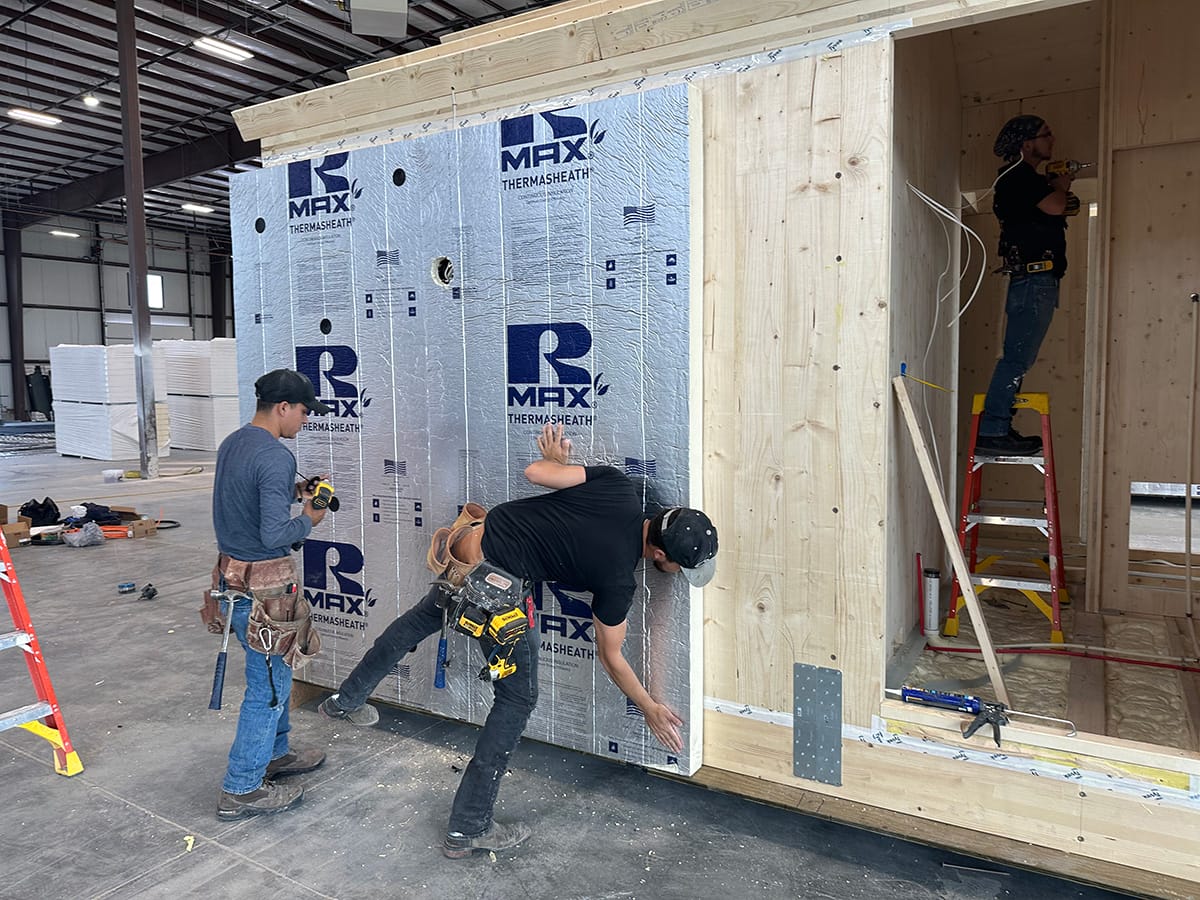
4-inch R27.4 polyiso being installed at Stack Homes in Salt Lake City, Utah.
The Rise of Offsite Construction
Since you are reading this article on this particular website, then you already know that offsite construction is a constantly evolving and revolutionary approach to building that involves the assembly of building components, or the entire building itself, in a controlled factory environment. When complete, these components or modules are transported to the construction site and assembled to create the final structure. There are many advantages to this approach: faster construction timelines, reduced on-site labor, minimized waste, and enhanced quality control. But for offsite construction to truly shine, the choice of insulation material is paramount.
Polyisocyanurate Insulation: A Top Performer
Polyisocyanurate, or polyiso, insulation has become a top choice for modular construction. This thermosetting plastic foam board is renowned for its impressive list of attributes:
- High Thermal Performance - Polyiso insulation offers one of the highest R-values per inch among commonly used insulation materials. This is a critical feature for achieving energy-efficient buildings. By using thinner insulation boards, you can maximize the usable space within modular units while maintaining exceptional thermal efficiency. This can help meet the increasingly stringent energy codes across the country without adversely affecting the existing exterior assembly.
- Lightweight - Polyiso insulation is also known for being extremely lightweight. In factory construction, where transport and handling efficiency are essential, its weight- or lack thereof- can lead to cost savings and reduced logistical challenges.
- Fire Resistance - Safety is paramount in construction. Polyiso is a thermoset plastic and boasts excellent fire resistance, which is a must-have feature in modular building components.
- Moisture Resistance - Closed-cell, closed matrix polyiso insulation inherently resists moisture, helping prevent water infiltration and the potential for mold and rot. This is particularly vital in modular structures that may be exposed to moisture during transportation and installation.
- Durability - Polyiso insulation is a strong, dense material that withstands the rigors of construction, ensuring the insulation’s performance throughout the building’s life.
- Sustainability - Many polyiso insulation products contain recycled content and are produced with a low Global Warming Potential (GWP) blowing agent, making it an environmentally friendly choices that align with sustainability goals.
Efficient Factory Installation
One of the most significant advantages of using polyiso insulation in offsite construction is the ease of installation. Its lightweight nature allows for straightforward handling and cutting. Some manufacturers are able to produce their polyiso to exact R-value thicknesses, and exact lengths, reducing wasted time and materials significantly. All of this leads to faster installation times, and enhanced production efficiency, all critical factors in factory-built construction. In many cases, when used as the air and weather resistive layer as well as the insulation, polyiso will help eliminate other layers and processes in the exterior assembly. Case studies have shown elimination of expensive weather resistive structural boards, 3rd party whole house weather resistive wraps, and moisture resistant exterior gypsum, removing significant process time and significant weight from the panel or module.

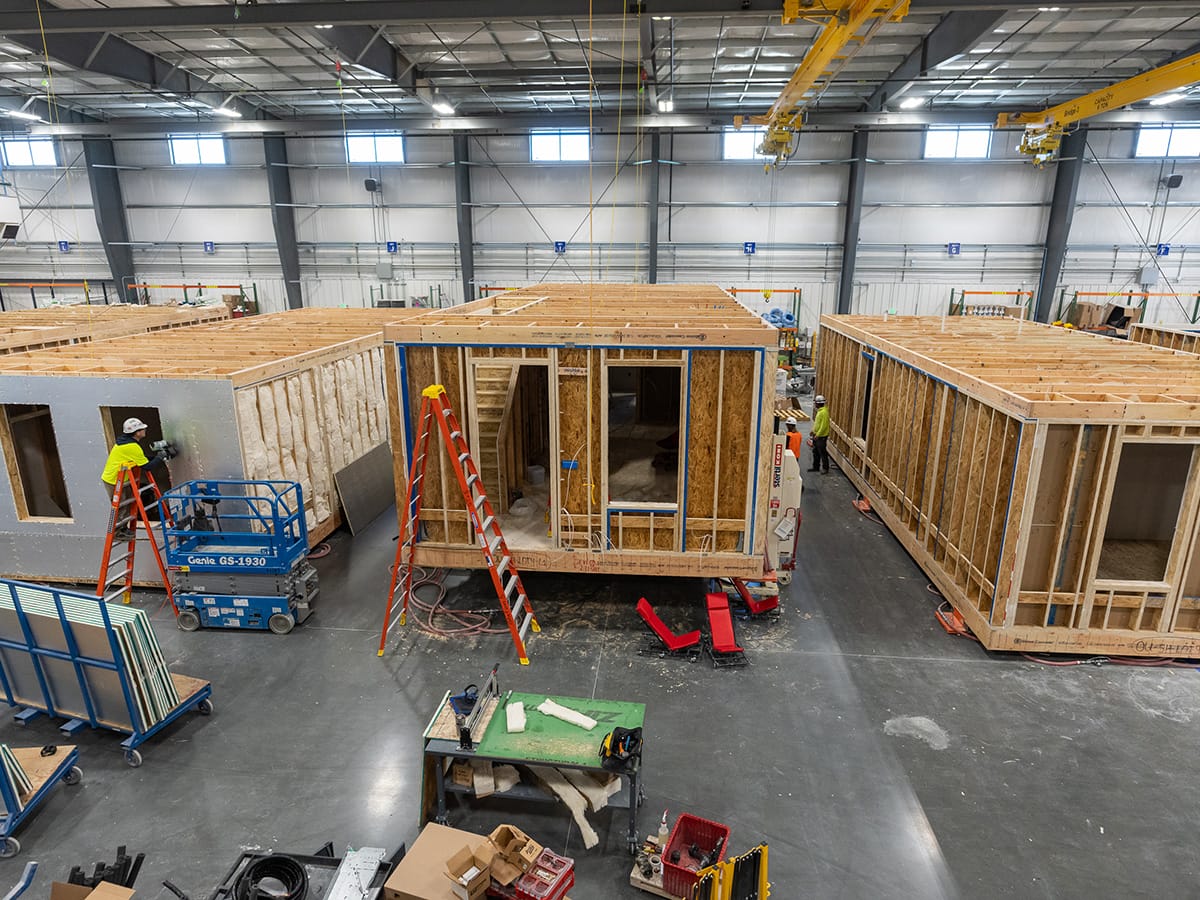
Installation of structural polyiso insulation at the Fading West factory in Buena Vista, CO.
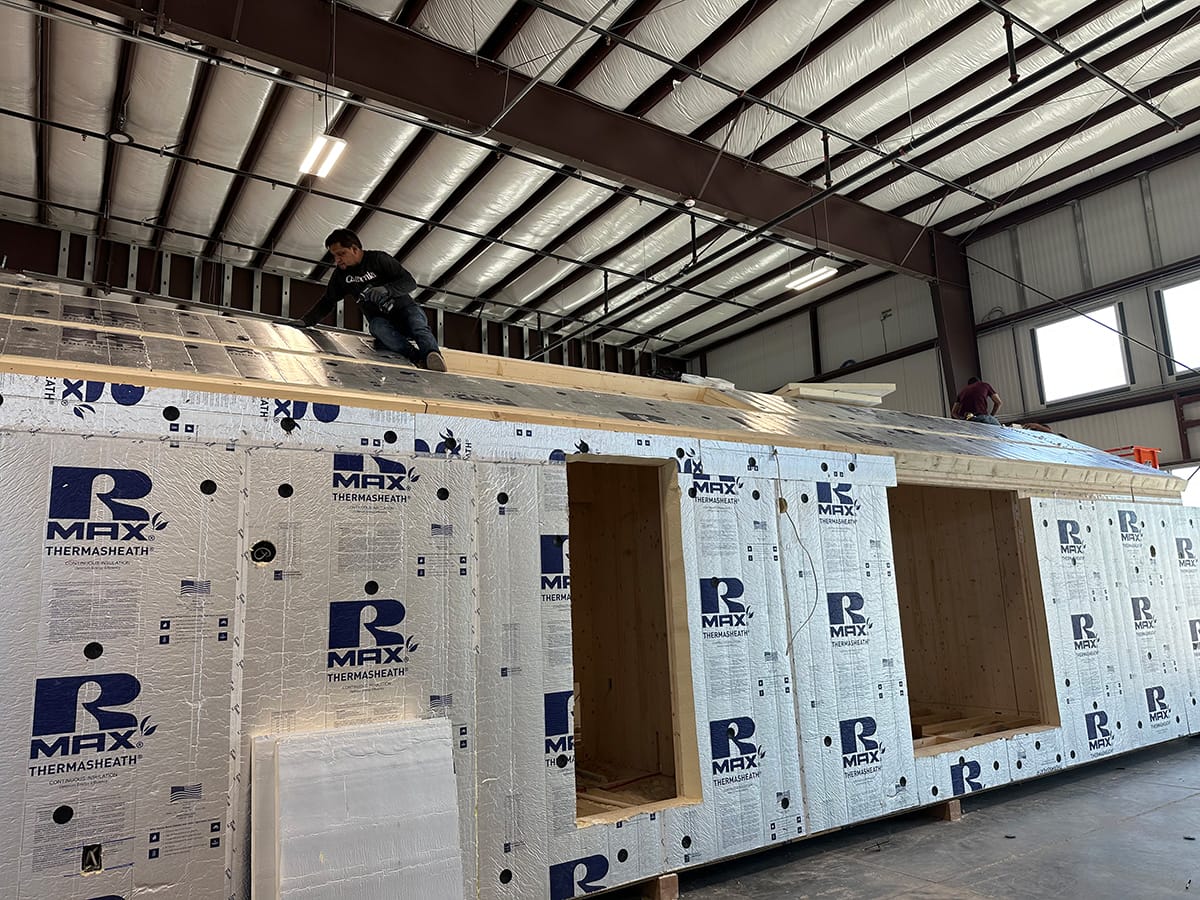
Stack Homes in Salt Lake City installs polyiso on roof and wall assemblies for a custom-built residence.
Moreover, polyiso insulation is compatible with just about any available claddings and design requirements. Versatility like this allows builders and architects the flexibility to create modular structures that are architecturally appealing while maintaining excellent energy performance.
Future-Ready Insulation
As offsite construction continues to gain momentum, so does the need for innovative, efficient, and high-performing building materials. Polyiso insulation is at the forefront of this movement, providing the thermal performance, fire, air and weather resistance, and durability required for offsite construction. Its lightweight, easy to install, and environmentally friendly, making it an essential tool for modern construction.
When a modular factory is considering the use of polyiso in their assemblies, they should ask themselves some important questions to make an informed decision. For example:
- What are our thermal performance requirements, and how do they corelate to local building codes and regulations?
- Is weight a concern?
- Is moisture resistance important?
- How does polyiso compare to other insulation materials regarding fire, air, and weather resistance?
- Does polyiso integrate well with other building materials we are using?
- Can polyiso reduce our labor and/ or processes by eliminating other components?
- Can polyiso come in specialty lengths or thicknesses suitable to our production needs?
Polyiso insulation is a game changer for the game changing industry that offsite construction is proving to be. By choosing this exceptional insulation material, factories can achieve much higher energy efficiency, much faster construction timelines, and an overall superior quality of construction. In the evolving world of construction, and with its ability to be used in a wide variety of assemblies and applications, polyiso insulation can be a vital component in offsite construction.
About the Author: Steve Dubin, based in Napa, California, is a Business Development Manager for Rmax, a Sika Company. His area of focus is on modular and offsite construction manufacturers. He can be reached on LinkedIn, or directly at dubin.steve@us.sika.com.
More from Modular Advantage
Resia: Breaking All the Rules
Resia Manufacturing, a division of U.S.-based Resia, is now offering prefabricated bathroom and kitchen components to industry partners. Its hybrid fabrication facility produces more precise bathroom and kitchen components (modules) faster and at lower cost than traditional construction. Here’s how Resia Manufacturing does it.
How LINQ Modular Innovates to Bring Modular To The Market in the UAE and Beyond
LINQ Modular, with an office and three manufacturing facilities in Dubai, is a modular firm based in United Arab Emirates. The company is on a mission: to break open the housing and construction markets in the Gulf Cooperation Council (GCC) area with modular.
ModMax: Redefining Modular Construction with Confidence and Precision
ModMax was born out of frustration—frustration with five persistent pain points in modular construction: Permitting bottlenecks. Production delays. Rigid designs. Disconnect between “the office” and the field. Lack of transparency and communication.
LifeArk: Disaster-Resilient Housing from Recycled Plastic and 100-year-old Technology
Wee compares LifeArk’s housing units to Yeti coolers, as they are built similarly. Each component takes 15 to 20 minutes to manufacture, has an R-value of 40, and includes molded slots and chases for wiring, plumbing, fire sprinklers, and other utilities.
Building the Future of Modular Edge Infrastructure
The edge data center market is expanding rapidly, driven by the surge in AI workloads, IoT adoption, and the need for localized compute power. In these environments, sustainability, scalability, and reliability are non-negotiable. Cooling is among the most complex challenges for operators—and one of the most decisive factors in long-term success.
Accelerating Light-Gauge Steel Construction: A Semi-Automated Digital Workflow for Off-Site Projects
For construction professionals, the message is clear. By adopting semi-automation and digitalization, companies can deliver projects faster, more accurately, and more profitably, while also building stronger collaboration across teams. The approach is not about replacing people with machines, but about empowering people with better tools and processes.
Why Modular Data Centers Are Gaining Momentum
Artificial intelligence, high-performance computing, and edge applications push the limits of traditional “stick-built” data centers. They take years build, often struggle with high density workloads, and aren’t optimized for deployments near end users. Modular data center platforms are purpose-built to address these challenges, offering flexibility and scalability to adapt to evolving technologies, while opening new opportunities for the modular construction industry.
Supply Chain Innovation in Action: 5 Habits Every Modular Leader Should Practice
By applying these principles to supply chain practices — collaborative planning, strategic procurement, scenario modeling, digital tools, and transparent forecasting — construction leaders can build value chains that are not just efficient and agile, but truly innovative.
Exploring the Role of Modular Integrated Construction (MiC) in Advancing Circular City Principles – A Survey of Stakeholder Perspectives
The survey findings highlight the significant potential of Modular integrated Construction (MiC) in advancing the development of circular cities. By reducing costs, accelerating construction timelines, and minimizing waste generation, MiC offers a promising approach to sustainable urban development.
The Use of MS POLYMER™-Based Sealants and Adhesives in Modular Building
These products combine flexibility and elastic recovery with excellent adhesion to different substrates and have already shown their usefulness in traditional construction. Now it’s time for them to be put to use in the modular construction industry.

